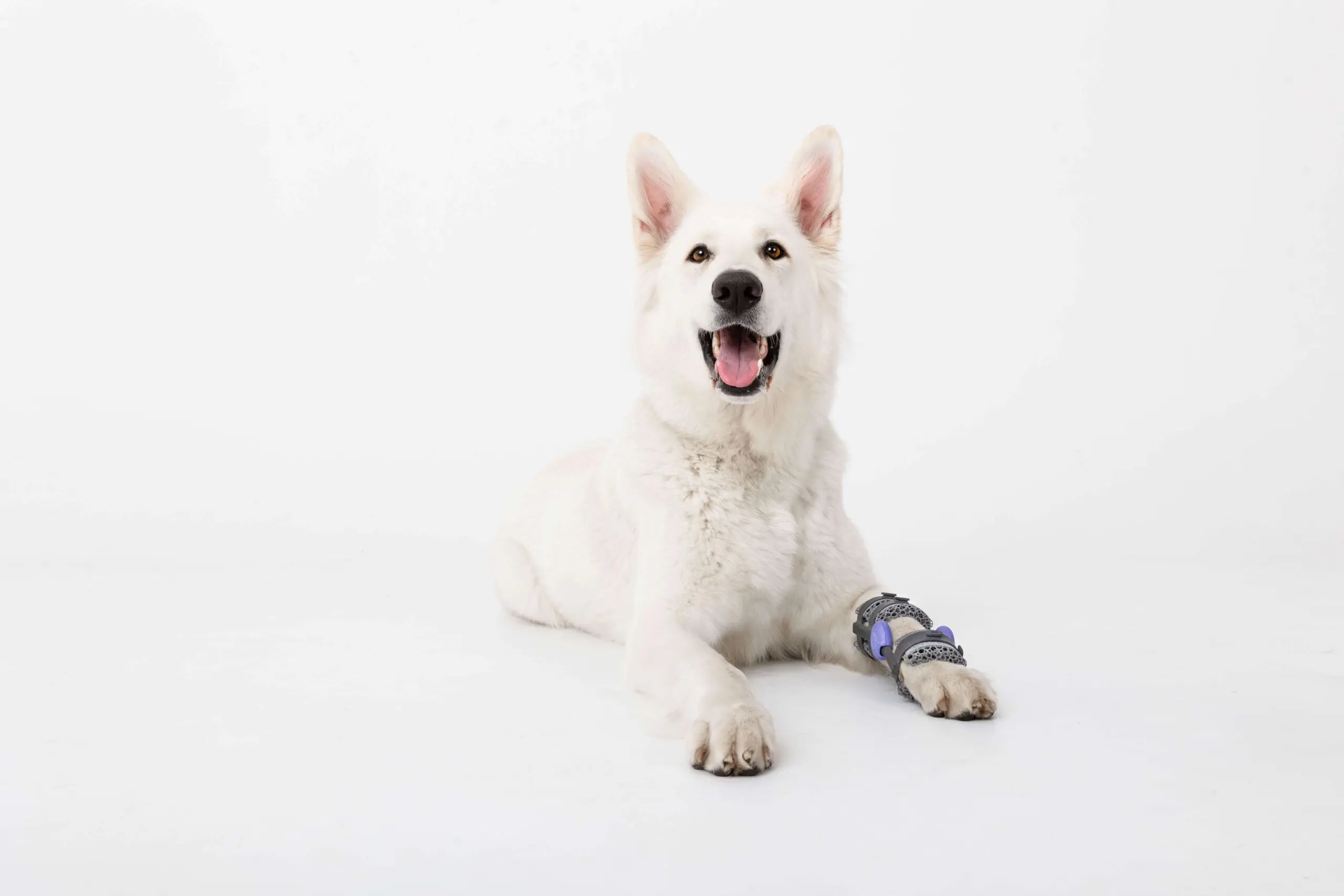Custom 3D-Printed Prosthetics for Dogs
Canine Prosthetics to Restore Pets’ Mobility
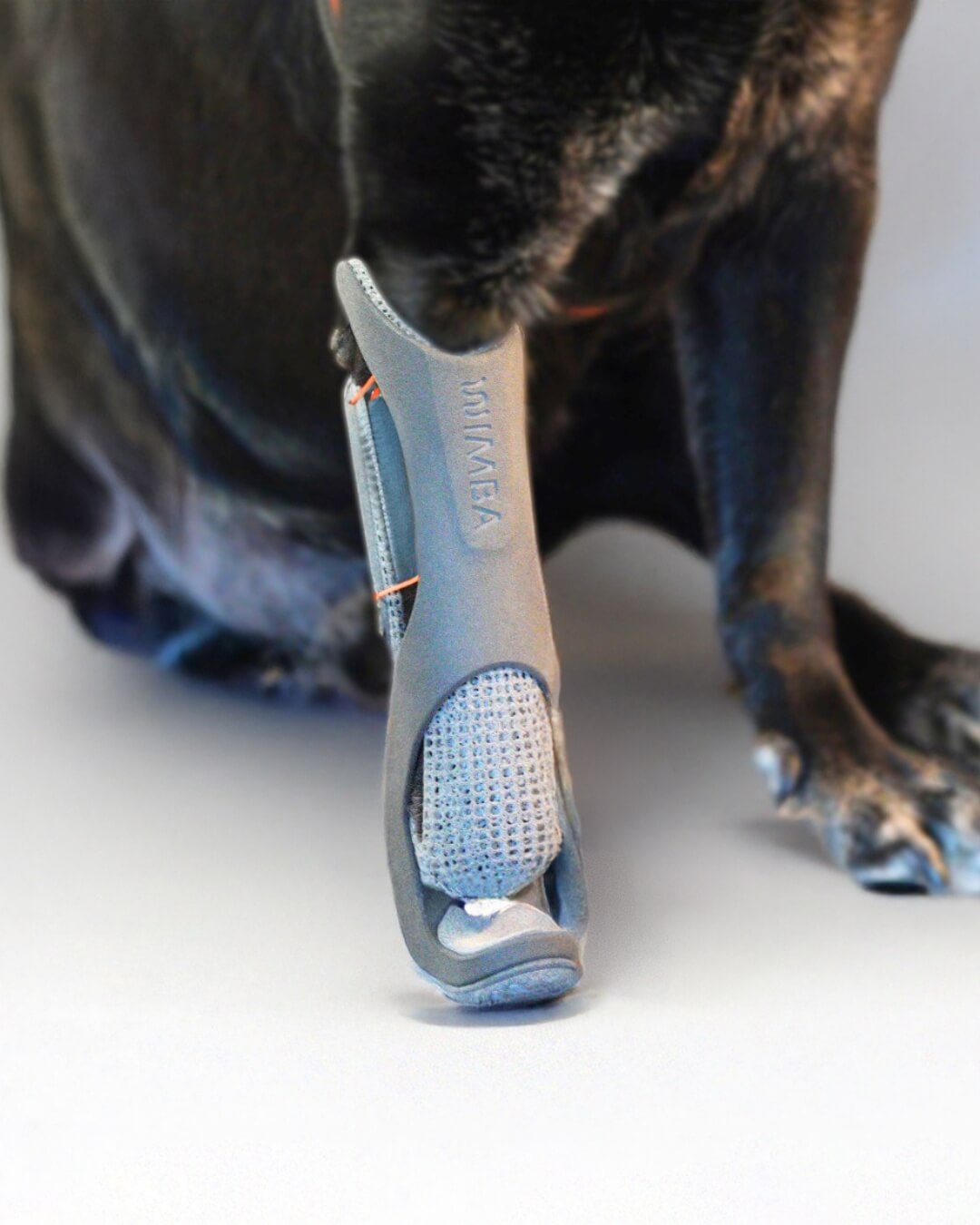
Prostheses for Pets – Ordered by Veterinary Professionals
WIMBA’s 3D-printed prosthetics for dogs are designed to restore mobility and improve the quality of life for patients with partial limb loss. Exclusively available to veterinary professionals, the WIMBA Prostheses Pro ensure a precise fit through advanced 3D scanning, biomechanical design, and digital customization—all seamlessly ordered via the WimbaAPP mobile application.
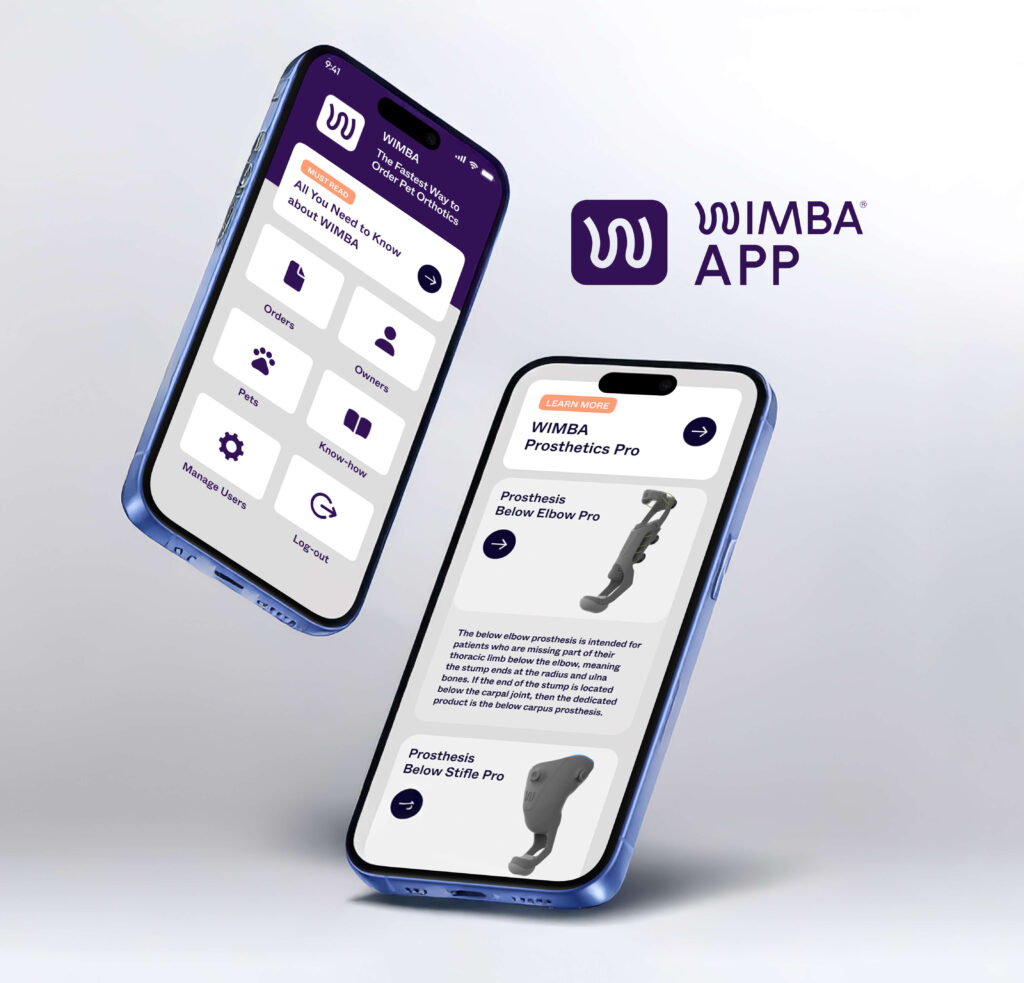
Why Choose WIMBA Prosthetics Pro?
With WIMBA, you can offer a non-invasive, functional solution for patients with congenital limb deficiencies, amputations, or trauma-related injuries.
Precision Fit
Custom-fit based on patient-specific 3D scans powered by WimbaSCAN technology.
Advanced Materials
Lightweight and 3D-printed advanced materials for optimal performance.
Seamless Ordering
Streamlined orthotics and prosthetics ordering through WimbaAPP.
Veterinary Trust
Trusted by veterinarians worldwide, with 260+ clinics across 30+ countries.
Who Benefits from WIMBA Prosthetics?
Our prosthetics are designed for dogs missing part of a limb due to:
Amputations
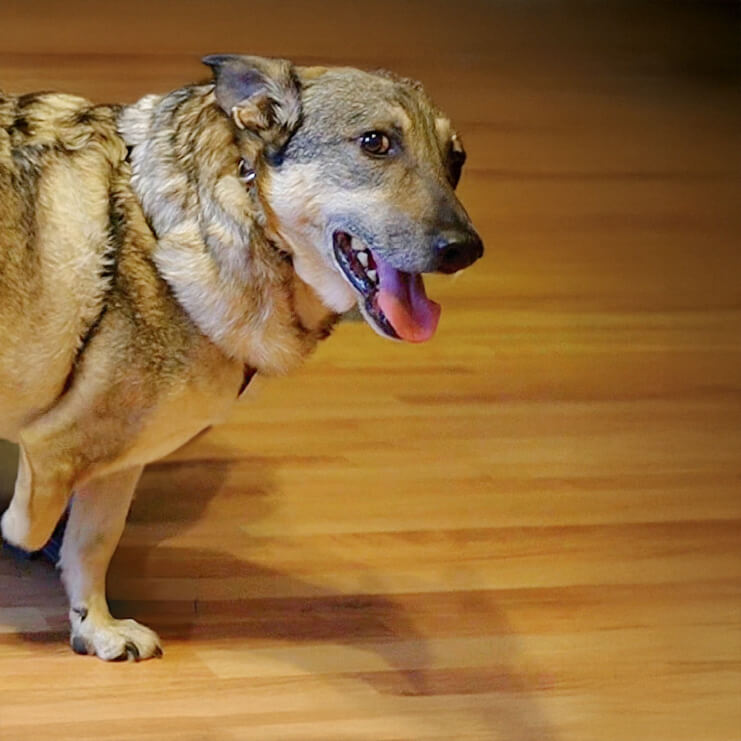
Congenital defects

Accidents or injuries
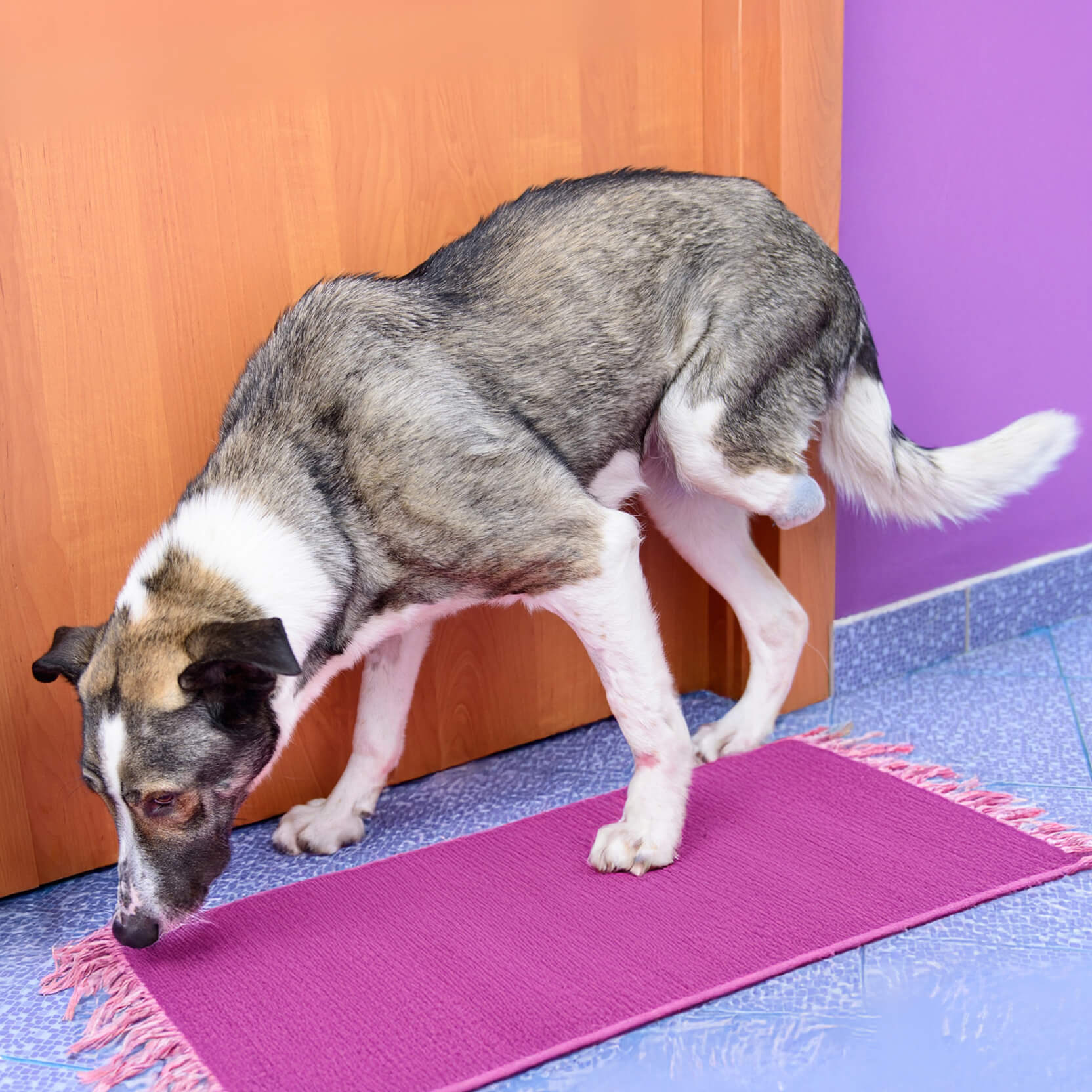
Precision 3D Scanning for a Superior Prosthetic Fit
Every WIMBA dog prosthesis is designed with cutting-edge 3D scanning technology, powered by WimbaSCAN to capture the precise shape of the pet’s stump and healthy limb. This ensures a custom fit that maximizes comfort, stability, and natural movement. Because each prosthesis is individually crafted to meet the dog’s unique needs, its final design may vary slightly from one case to another.
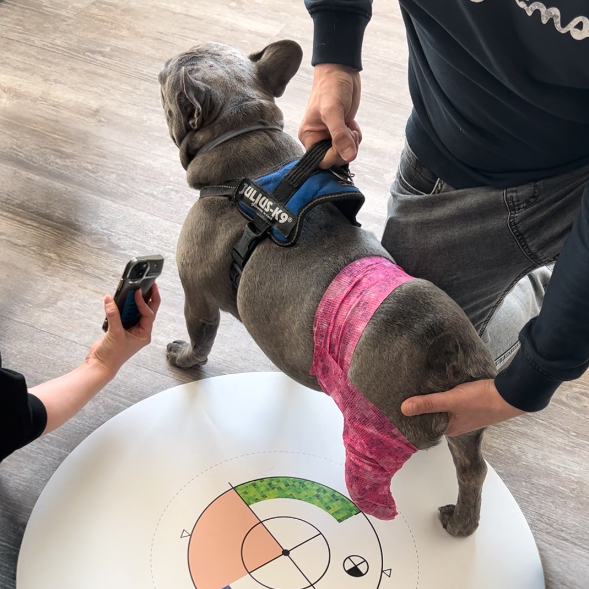
WIMBA Prosthetics Pro Solutions
FRONT LEG
Thoracic Limb Prosthetics for Dogs
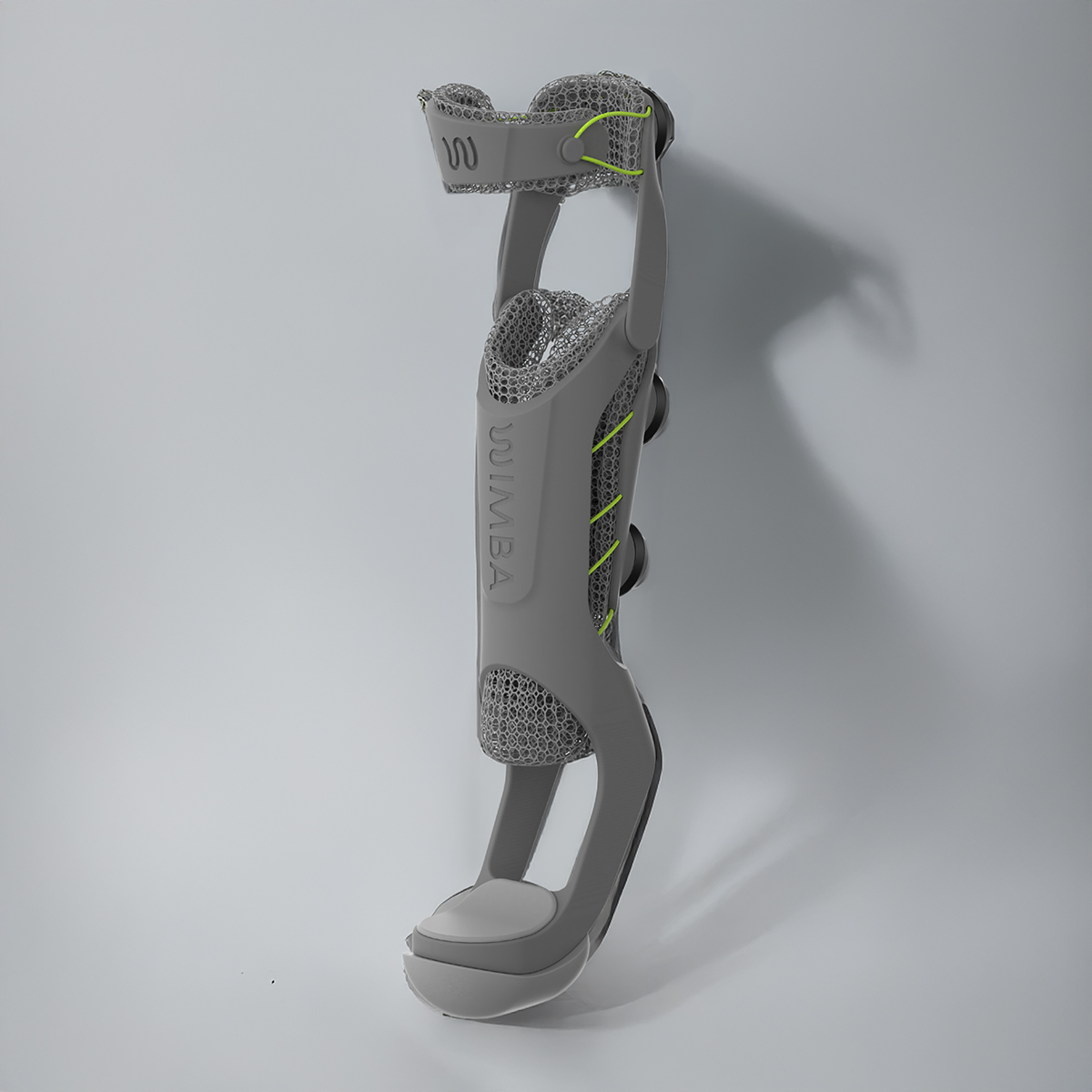
Below Elbow Prosthesis
For patients who are missing part of their thoracic limb below the elbow, meaning the stump ends at the radius and ulna bones.

Below Carpus Prosthesis
For patients who are missing the distal part of their thoracic limb, meaning the stump is at the level of the metacarpus or phalanges.
HIND LEG
Pelvic Limb Prosthetics for Dogs
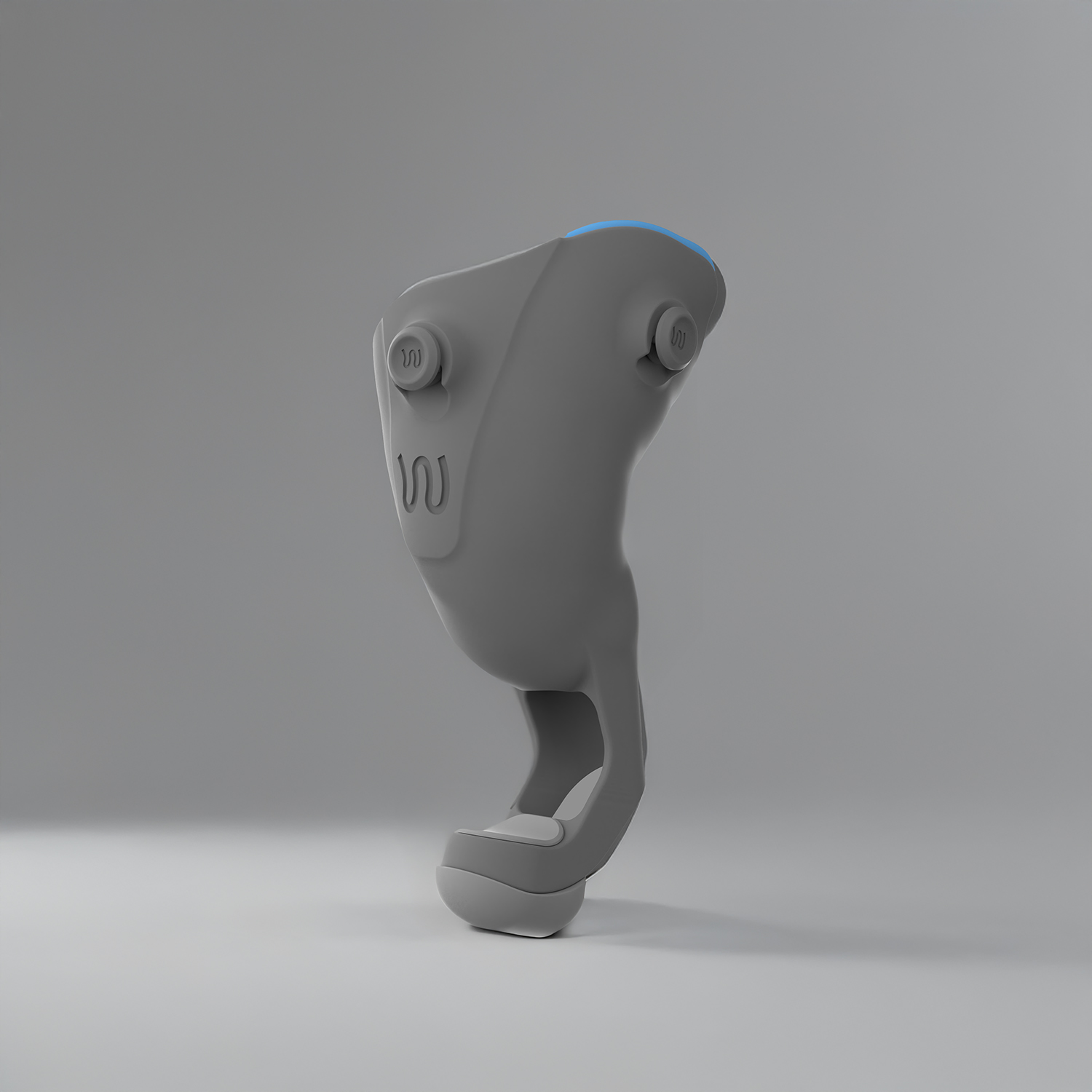
Below Stifle Prosthesis
For patients who are missing part of their pelvic limb below the knee, meaning the stump ends at the fibula and tibia bones.
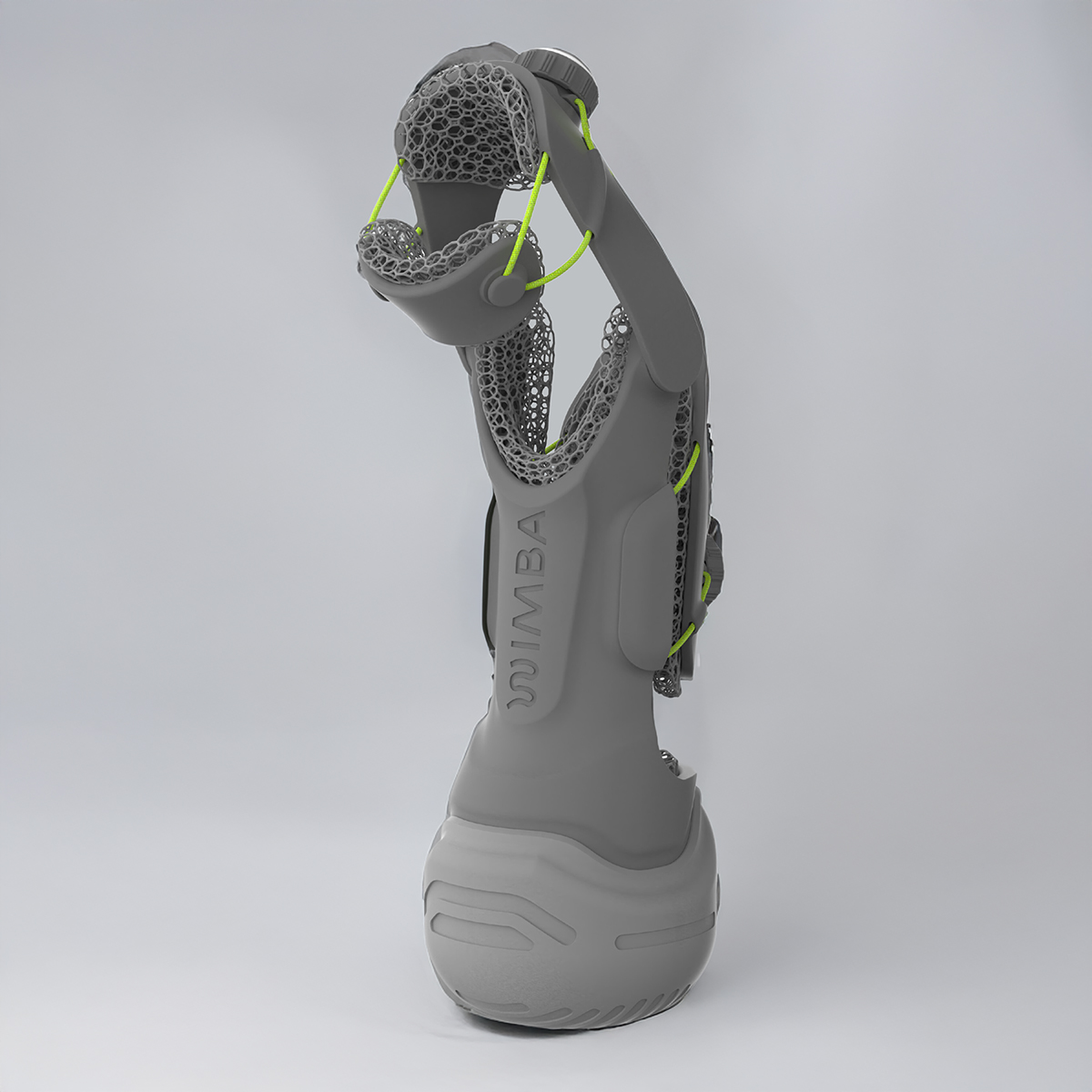
Below Tarsus Prosthesis
For patients who are missing the distal part of their pelvic limb, meaning the stump is at the level of the metatarsus or phalanges.
Please note: WIMBA does not provide prosthetics for full limb amputation.
How to Order Custom Dog Prosthetics
Ordering a canine WIMBA prosthesis is available exclusively through veterinary professionals who are certified WIMBA Providers. If you’re a pet owner, visit our interactive map to find a certified WIMBA Provider near you or contact us with your vet details. See how WIMBA prosthetics are being created!
Step 1
Become a WIMBA Provider Pro
To place an order for a prosthesis, you need to be a WIMBA Provider Pro. This ensures you have access to the WIMBA Box, which includes the necessary scanning equipment for accurate data collection.

Step 2
Capture Accurate Data
Before placing an order through the app, collect essential patient information, including:
✅ Video scans of the stump and healthy limb (using WimbaSCAN) – you need to become a WIMBA Provider Pro to receive the scanning equipment
✅ Manual measurements (limited to essential validation points)
✅ Radiographs (required) or CT scans (optional)
✅ Videos of the dog’s gait and stump condition

Manufacturing Process of WIMBA Prosthetics for Dogs
Each WIMBA prosthesis is developed through a multi-stage process to ensure an optimal fit. This iterative approach guarantees a precise, biomechanically optimized fit for the patient. Once the order is placed via WimbaAPP, the following stages begin:
Tripod Dogs: Support for Three-Legged Dogs Beyond Prosthetics
Not all amputee patients require a prosthesis. Many three-legged dogs develop compensatory strain on their remaining limbs, leading to overuse injuries. In such cases, a custom orthotic can provide stability, joint support, and injury prevention—offering an alternative or complementary solution to a prosthesis. At WIMBA, we specialize not only in custom 3D-printed pet prosthetics but also in orthotics, designed to enhance the quality of life for amputated pets.

Order Canine Prosthetics and Orthotics for Your Patients
Need assistance? Our expert team is here to help with all your questions about pet prostheses or orthoses, measurements, and order processes. Find the best prosthetics and orthotics for dogs with WIMBA – we offer worldwide shipping.
WIMBA Case Studies
Explore our full range of case studies to see how WIMBA solutions are helping pets regain mobility and comfort.
Amputated Pets Supported by WIMBA
SZARY
Szary arrived at a shelter in Poland in 2022 due to the ongoing war in Ukraine, already missing a paw. Despite his condition, he was always happy and friendly, getting along with people and other dogs. He found the perfect owner who supported his rehabilitation journey. In 2024, Szary received his WIMBA prosthesis. See his first steps in the prosthesis:
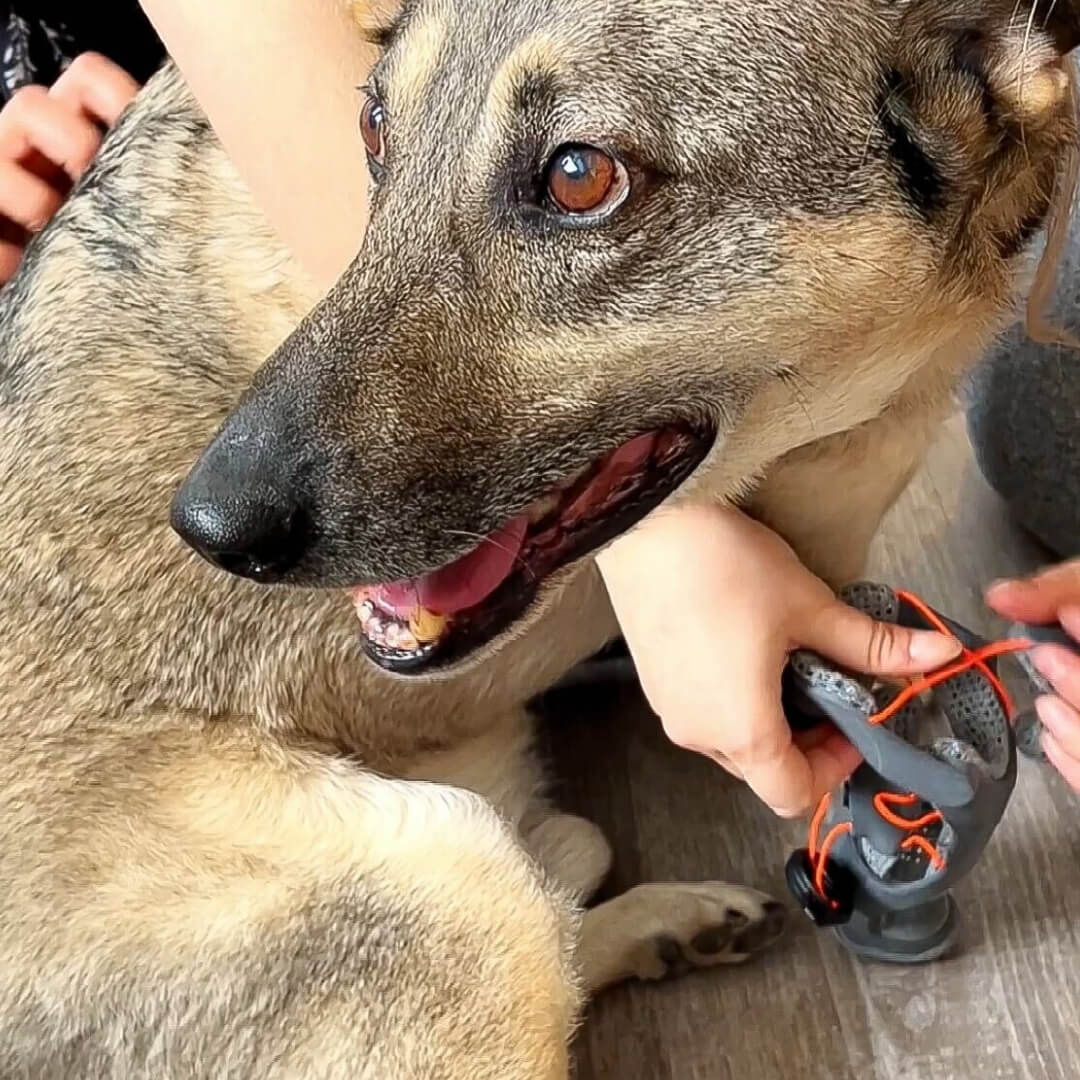
EDEN
Eden was born without front paws, but this brave dog is taking her first steps with her new WIMBA prosthetics! The rehabilitation journey will be long and challenging, but she’s learning a whole new way to move and proving just how strong she is!
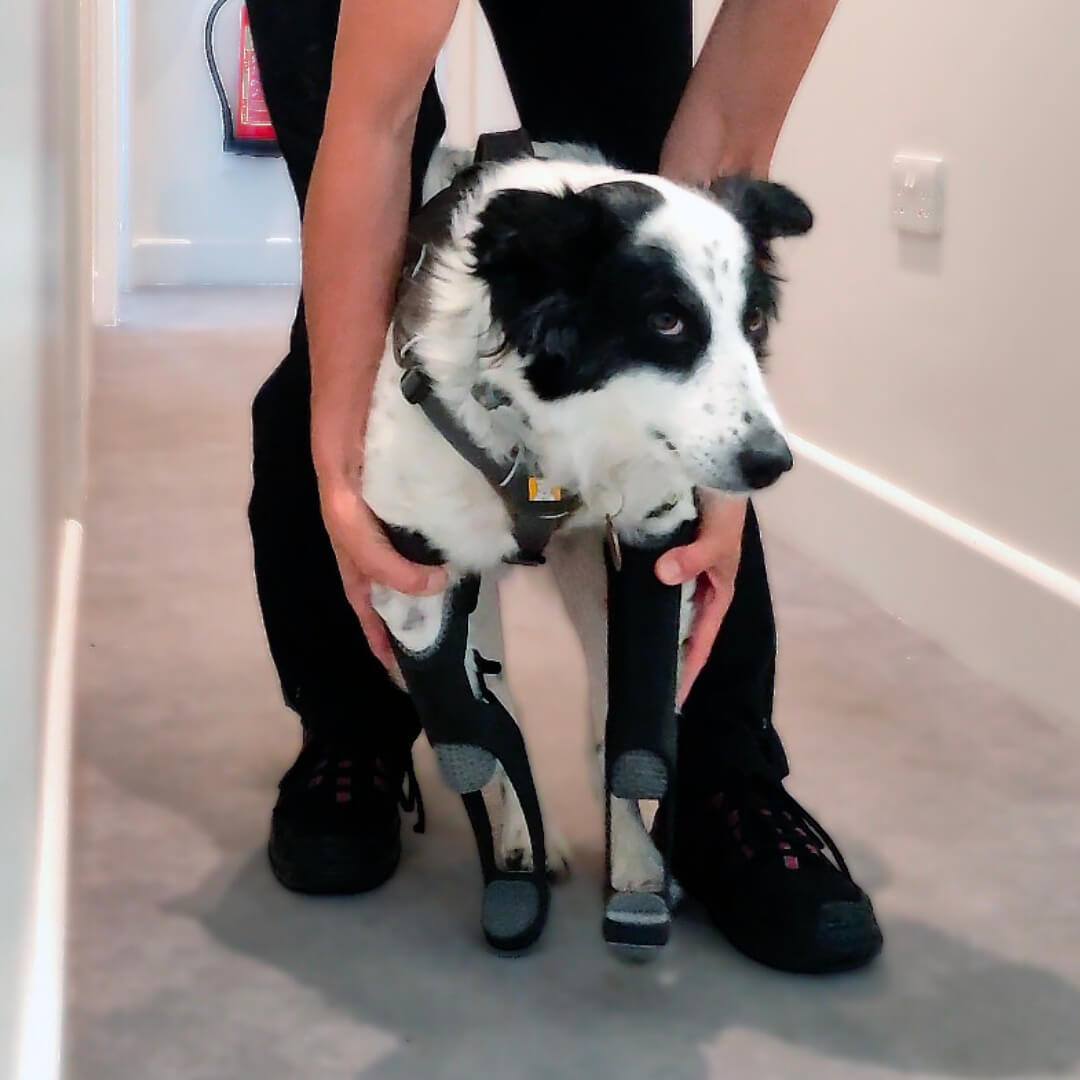
LETO
Leto is a 40-kilo Labrador, who received a 3D-printed prosthetic for his front limb after an amputation. See the first steps in his WIMBA prosthesis!

KALINA
Kalina, an 11-year-old Akita/Border Collie mix, was diagnosed with osteoarthritis, CCL rupture, and bilateral carpal hyperextension. Despite being a three-legged dog, she doesn’t rely on prosthetics; instead, a custom WIMBA orthotic for her front legs has transformed her life. The brace has enabled her to resume her favorite activities, improving her mobility and emotional well-being.
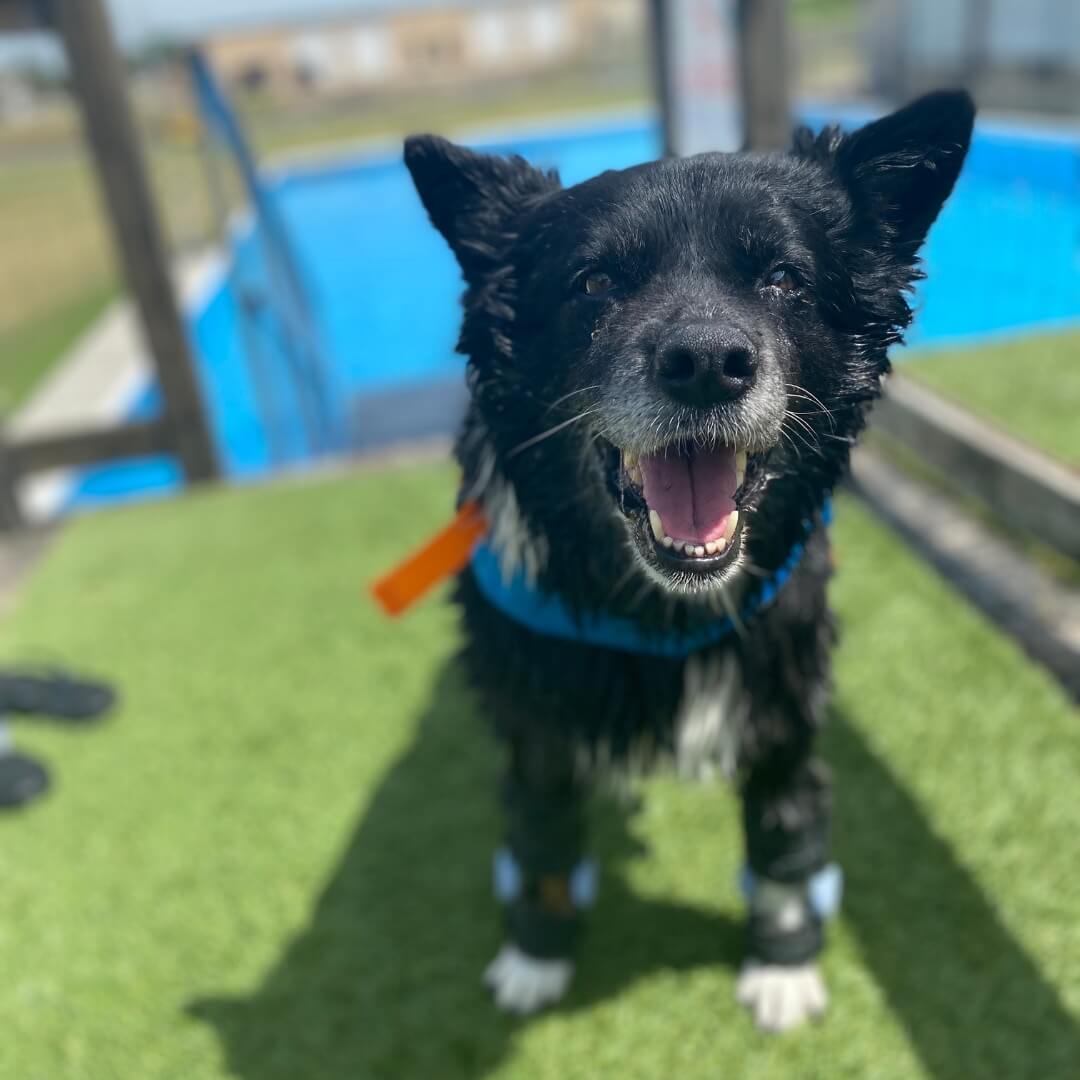
Frequently Asked Questions about WIMBA Canine Prosthetics
How long does it take to receive the prosthetic?
How long does it take to receive the prosthetic?
The production time is approximately 20–60 working days after receiving all necessary scans and data, depending on the number of prototypes required. Shipping time is additional.
Do I need a veterinarian to order?
Do I need a veterinarian to order?
Yes, a veterinarian must place the order to ensure the best possible fit, comfort, and medical suitability for your pet.
How much does WIMBA Prosthesis cost?
How much does WIMBA Prosthesis cost?
The cost varies depending on the complexity of the case and the number of prototypes needed. If you are a pet owner – for a detailed quote, please consult your veterinarian. If you are a veterinary professional, reach out to us directly at hello@wimba.vet
How to introduce the prosthesis to a pet?
How to introduce the prosthesis to a pet?
Allow a pet to sniff and investigate it first. Use treats, praise, and gentle petting to create positive associations before fitting it for the first time.
How long does it take for a pet to adjust to a prosthesis?
How long does it take for a pet to adjust to a prosthesis?
Every pet is different, but most take a few weeks to fully adapt. Patience, positive reinforcement, and a gradual introduction process help ensure a smooth transition. To achieve the best long-term success, we highly recommend pairing the prosthesis with a rehabilitation program guided by a veterinary professional. Rehabilitation helps pets build strength, improve balance, and develop proper gait patterns, making the adjustment period smoother and increasing overall comfort and mobility
How long should a pet wear the prosthesis each day?
How long should a pet wear the prosthesis each day?
Start with short sessions (5–10 minutes) and gradually increase the duration as a pet becomes comfortable. Always monitor for signs of discomfort.
What signs indicate discomfort or poor fit?
What signs indicate discomfort or poor fit?
Signs of discomfort or poor fit include the brace rotating, shifting up or down on the limb with movement, or not staying in place despite appropriate tightness. Watch for limping, excessive licking of the prosthetic area, reluctance to move, or skin irritation.
Can a pet go for walks and play with a prosthesis?
Can a pet go for walks and play with a prosthesis?
Yes! Start with short, controlled walks on flat surfaces. Gradually reintroduce favorite activities under supervision and follow your veterinarian’s guidance.
How to keep the prosthesis clean and well-maintained?
How to keep the prosthesis clean and well-maintained?
Follow the manufacturer’s cleaning guidelines, check for signs of wear, and inspect a pet’s limb daily for irritation.
Do I need to schedule follow-up visits?
Do I need to schedule follow-up visits?
Yes, regular check-ups with your prosthetics provider or rehabilitation specialist ensure the prosthesis remains a good fit as your pet adapts.
Can a pet sleep with the prosthesis on?
Can a pet sleep with the prosthesis on?
No, it’s recommended to remove the prosthesis during rest periods to prevent fatigue and allow the limb to recover.
What if a pet refuses to move with the prosthesis?
What if a pet refuses to move with the prosthesis?
Start with making sure it is donned correctly and the stump is fully seated with no areas of pinching or excessive constriction. Once confirmed that it is donned correctly, encourage movement with treats and praise. Start on stable, flat surfaces, and consult a professional if your pet continues to resist
